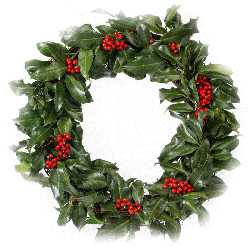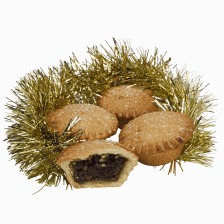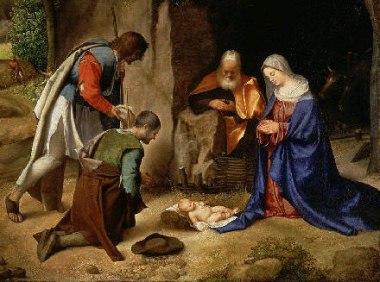From Historic UK
By Ben Johnson
Whilst the term “Christmas” first became part of the English language in the 11th century as an amalgamation of the Old English expression “Christes Maesse”, meaning “Festival of Christ”, the influences for this winter celebration pre-date this time significantly.
Winter festivals have been a popular fixture of many cultures throughout the centuries. A celebration in expectation of better weather and longer days as spring approached, coupled with more time to actually celebrate and take stock of the year because there was less agricultural work to be completed in the winter months, has made this time of year a popular party season for centuries.
Whilst mostly synonymous with Christians as the holiday commemorating the birth of Jesus (the central figure of Christianity), celebrating on the 25th December was a tradition that was borrowed, rather than invented, by the Christian faith and is still celebrated by Christians and non-Christians alike today. Indeed the Roman celebration of Saturnalia, in honour of Saturn the Harvest God, and the Scandinavian festival of Yule and other Pagan festivals centred on the Winter Solstice were celebrated on or around this date. As Northern Europe was the last part of the continent to embrace Christianity, the pagan traditions of old had a big influence on the Christian Christmas celebrations.

The official date of the birth of Christ is notably absent from the Bible and has always been hotly contested. Following the instigation of Christianity as the official religion of the Roman Empire in the latter part of the 4th century, it was Pope Julius I who eventually settled on 25 December. Whilst this would tie in with the suggestions of the 3rd century historian Sextus Julius Africanus that Jesus was conceived on the spring equinox of 25 March, the choice has also been seen as an effort to ‘Christianise’ the pagan winter festivals that also fell on this date. Early Christian writers suggested that the date of the solstice was chosen for the Christmas celebrations because this is the day that the sun reversed the direction of its cycle from south to north, connecting the birth of Jesus to the ‘rebirth’ of the sun.
In the Early Middle Ages, Christmas was not as popular as Epiphany on 6 January, the celebration of the visit from the three kings or wise men, the Magi, to the baby Jesus bearing gifts of gold, frankincense and myrrh. Indeed, Christmas was not originally seen as a time for fun and frolics but an opportunity for quiet prayer and reflection during a special mass. But by the High Middle Ages (1000-1300) Christmas had become the most prominent religious celebration in Europe, signalling the beginning of Christmastide, or the Twelve Days of Christmas as they are more commonly known today.
The medieval calendar became dominated by Christmas events starting forty days prior to Christmas Day, the period we now know as Advent (from the Latin word adventus meaning “coming”) but which was originally know as the “forty days of St. Martin” because it began on 11 November, the feast day of St Martin of Tours.
Although gift giving at Christmas was temporarily banned by the Catholic Church in the Middle Ages due to its suspected pagan origins, it was soon popular again as the festive season in the Middle Ages became a time of excess dominated by a great feast, gifts for rich and poor and general indulgence in eating, drinking, dancing and singing.
Many monarchs chose this merry day for their coronation. This included William the Conqueror, whose coronation on Christmas Day in 1066 incited so much cheering and merriment inside Westminster Abbey that the guards stationed outside believed the King was under attack and rushed to assist him, culminating in a riot that saw many killed and houses destroyed by fire.
Some well known modern Christmas traditions have their roots in the Medieval celebrations:
Christmas or Xmas? Although many people frown upon the seemingly modern abbreviation of Xmas, X stands for the Greek letter chi, which was the early abbreviation for Christ or the Greek ‘Khristos’. The X also symbolises the cross on which Christ was crucified.

Mince Pies were originally baked in rectangular cases to represent the infant Jesus’ crib and the addition of cinnamon, cloves and nutmeg was meant to symbolise the gifts bestowed by the three wise men. Similarly to the more modern mince pies we see today, these pies were not very large and it was widely believed to be lucky to eat one mince pie on each of the twelve days of Christmas. However, as the name suggests, mince pies were originally made of a variety of shredded meat along with spices and fruit. It was only as recently as the Victorian era that the recipe was amended to include only spices and fruit.
Carol singers. Some of us enjoy the sound of carollers on our doorsteps but the tradition for carol singers going door to door is actually a result of carols being banned in churches in medieval times. Many carollers took the word carol literally (to sing and dance in a circle) which meant that the more serious Christmas masses were being ruined and so the Church decided to send the carol singers outside.
Anyone for humble pie? While the most popular choice for Christmas dinner today is undoubtedly turkey, the bird was not introduced to Europe until after the discovery of the Americas, its natural home, in the 15th century. In medieval times goose was the most common option. Venison was also a popular alternative in medieval Christmas celebrations, although the poor were not allowed to eat the best cuts of meat. However, the Christmas spirit might entice a Lord to donate the unwanted parts of the family’s Christmas deer, the offal, which was known as the ‘umbles’. To make the meat go further it was often mixed with other ingredients to make a pie, in this case the poor would be eating ‘umble pie’, an expression we now use today to describe someone who has fallen from their pedestal to a more modest level.

The Christmas crib originated in 1223 in medieval Italy when Saint Francis of Assisi explained the Christmas Nativity story to local people using a crib to symbolise the birth of Jesus.
Boxing Day has traditionally been seen as the reversal of fortunes, where the rich provide gifts for the poor. In medieval times, the gift was generally money and it was provided in a hollow clay pot with a slit in the top which had to be smashed for the money to be taken out. These small clay pots were nicknamed “piggies” and thus became the first version of the piggy banks we use today.
Unfortunately Christmas Day was also traditionally a “quarter day”, one of the four days in the financial year on which payments such as ground rents were due, meaning many poor tenants had to pay their rent on Christmas Day!
Whilst the excitement and frivolities of Christmas make it easy to forget the more serious aspects of the festival, it can also be argued that the tradition started by the wise men with their gifts of gold, frankincense and myrrh continues today, although with perhaps slightly less exotic gifts!
No comments:
Post a Comment
Comments are subject to deletion if they are not germane. I have no problem with a bit of colourful language, but blasphemy or depraved profanity will not be allowed. Attacks on the Catholic Faith will not be tolerated. Comments will be deleted that are republican (Yanks! Note the lower case 'r'!), attacks on the legitimacy of Pope Leo XIV as the Vicar of Christ, the legitimacy of the House of Windsor or of the claims of the Elder Line of the House of France, or attacks on the legitimacy of any of the currently ruling Houses of Europe.